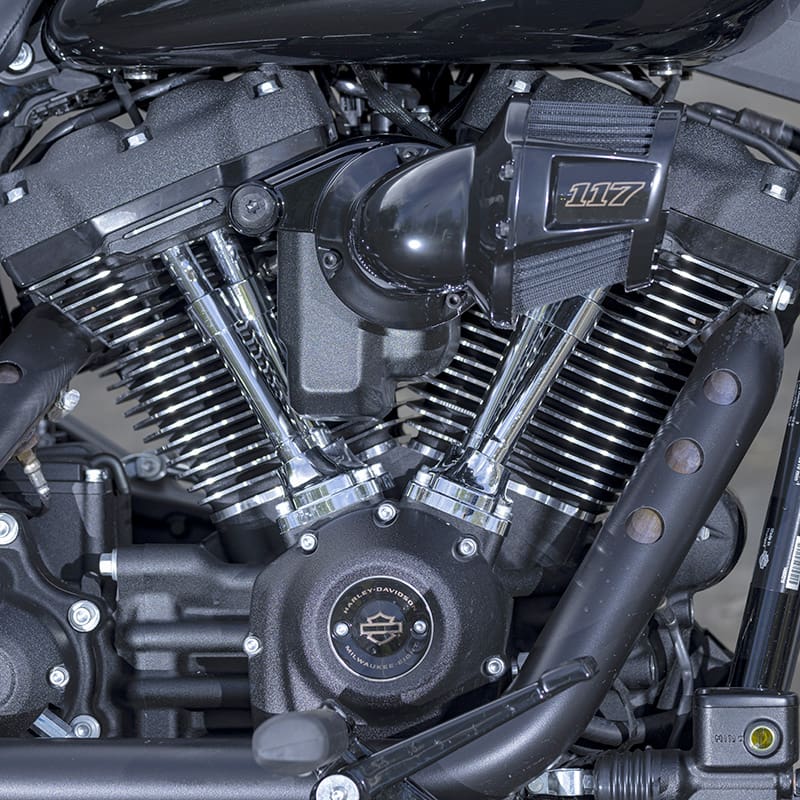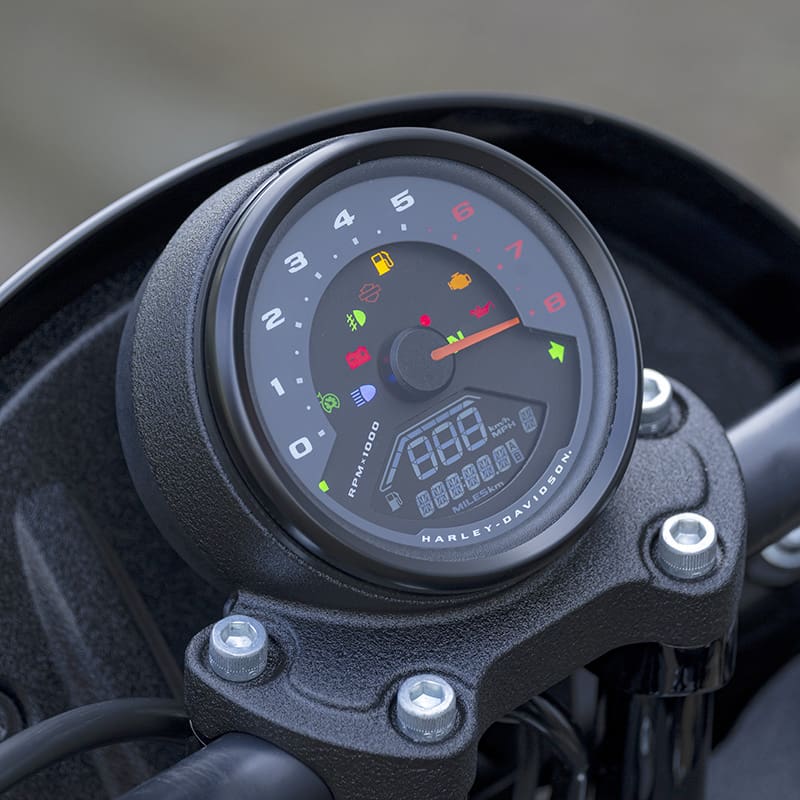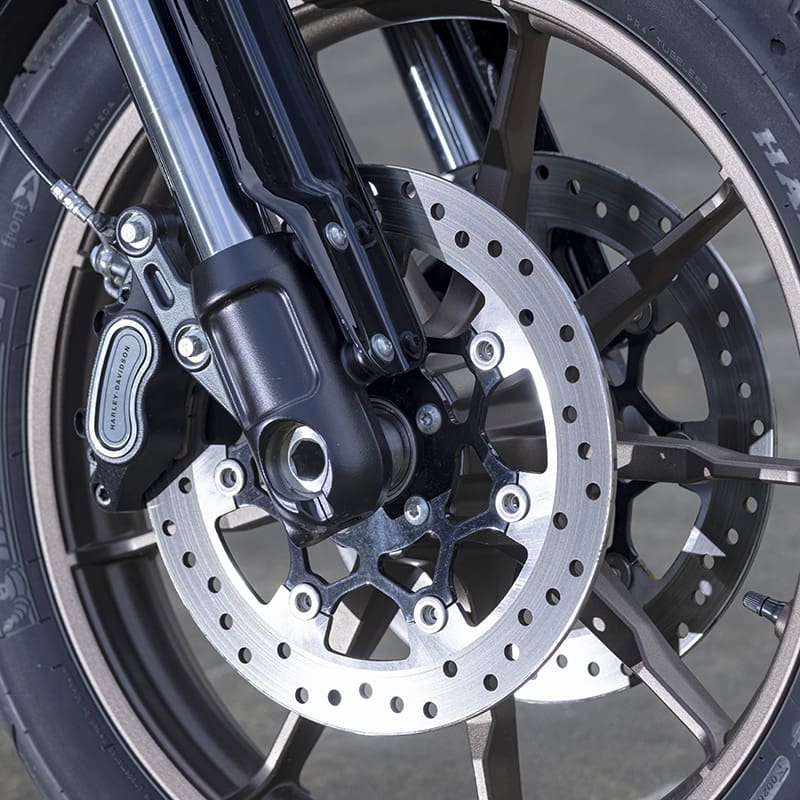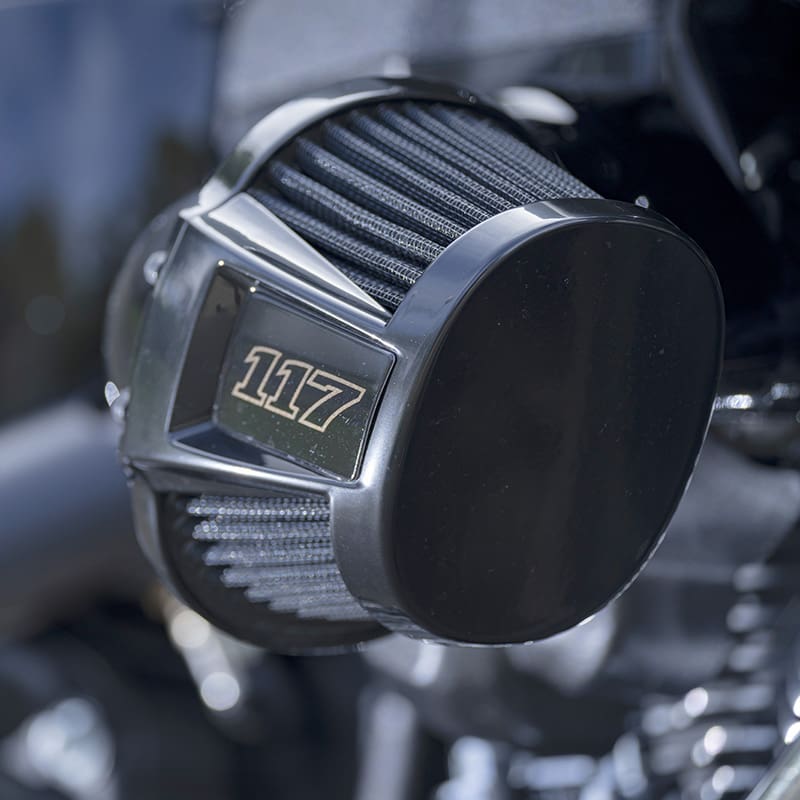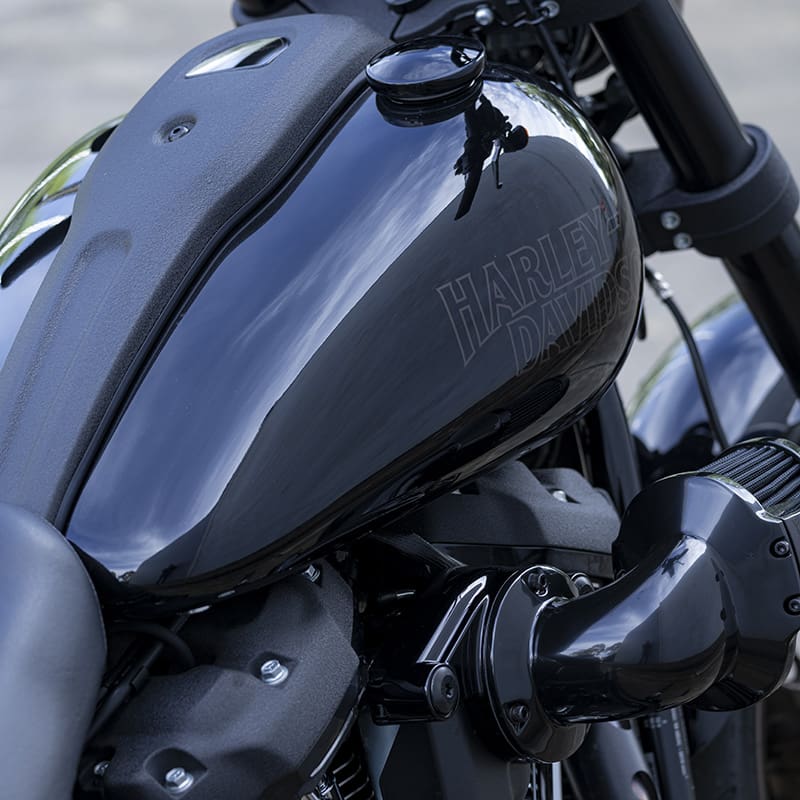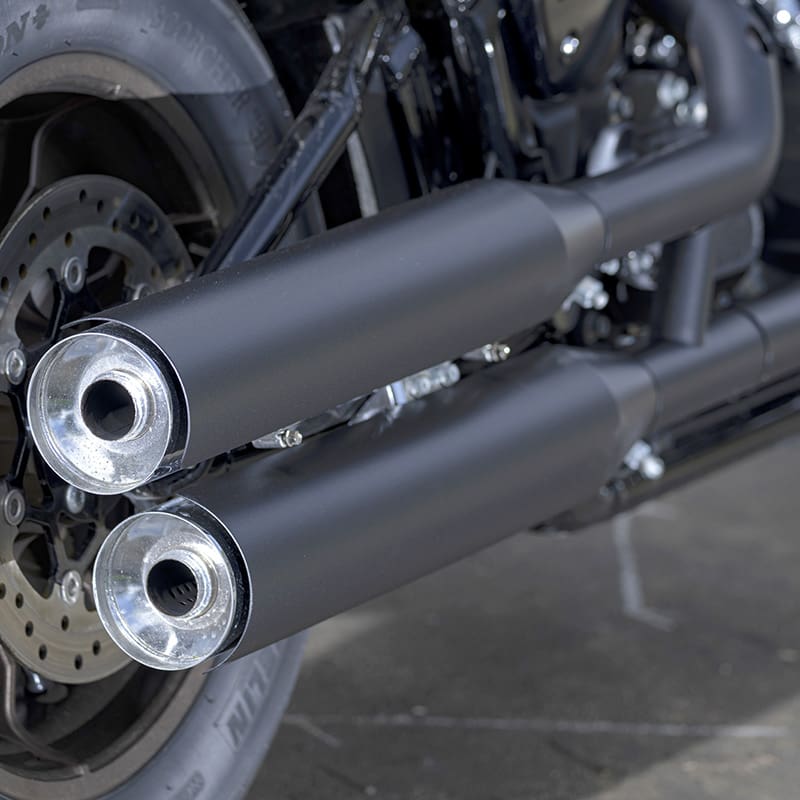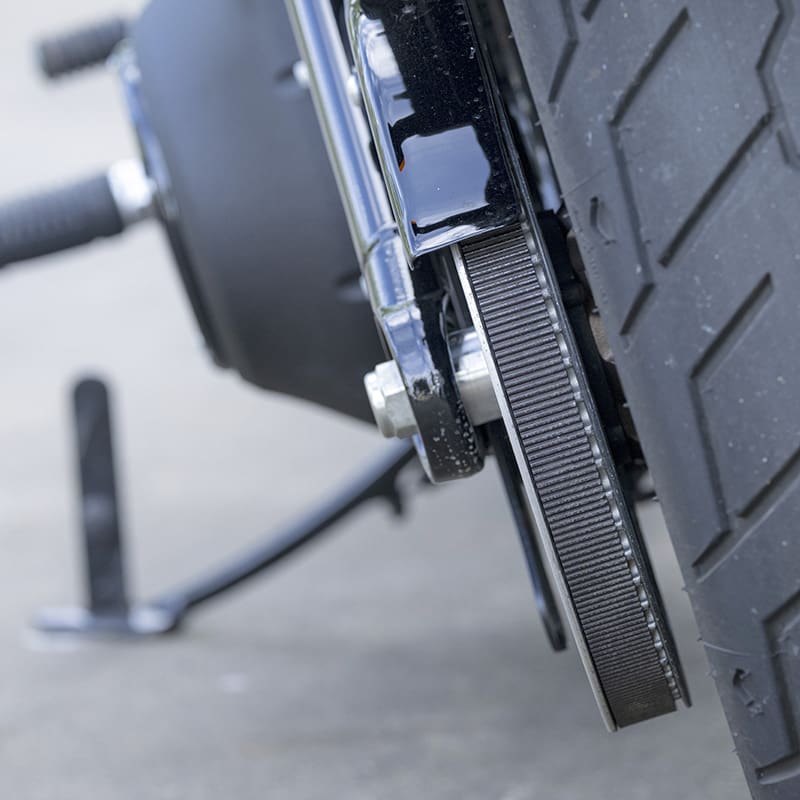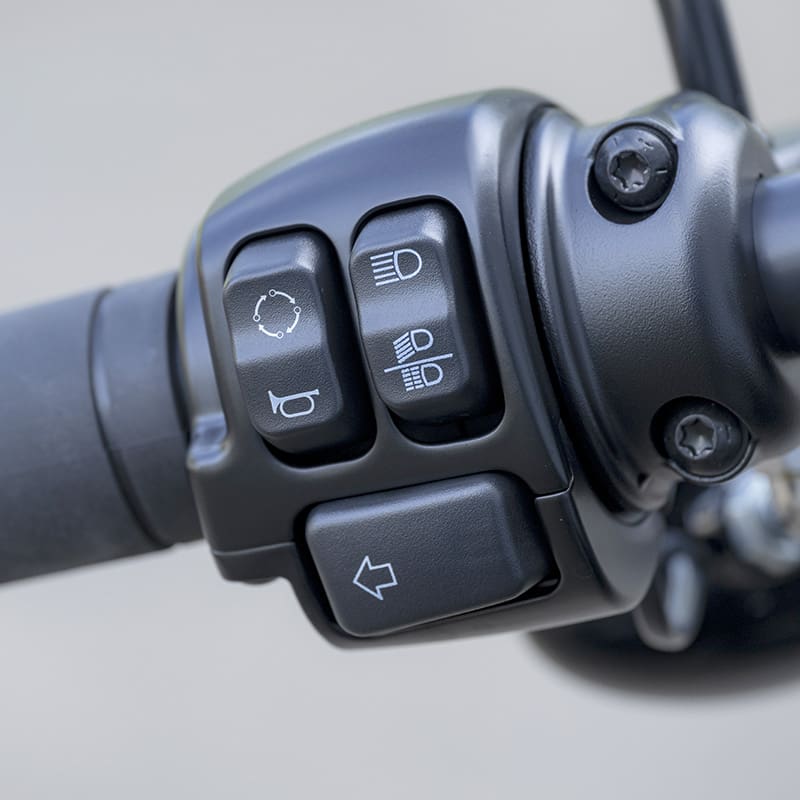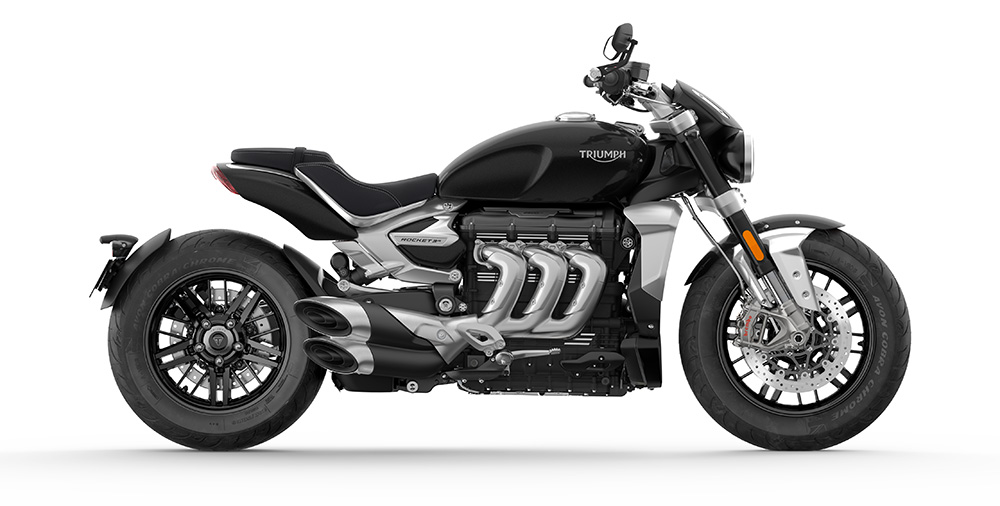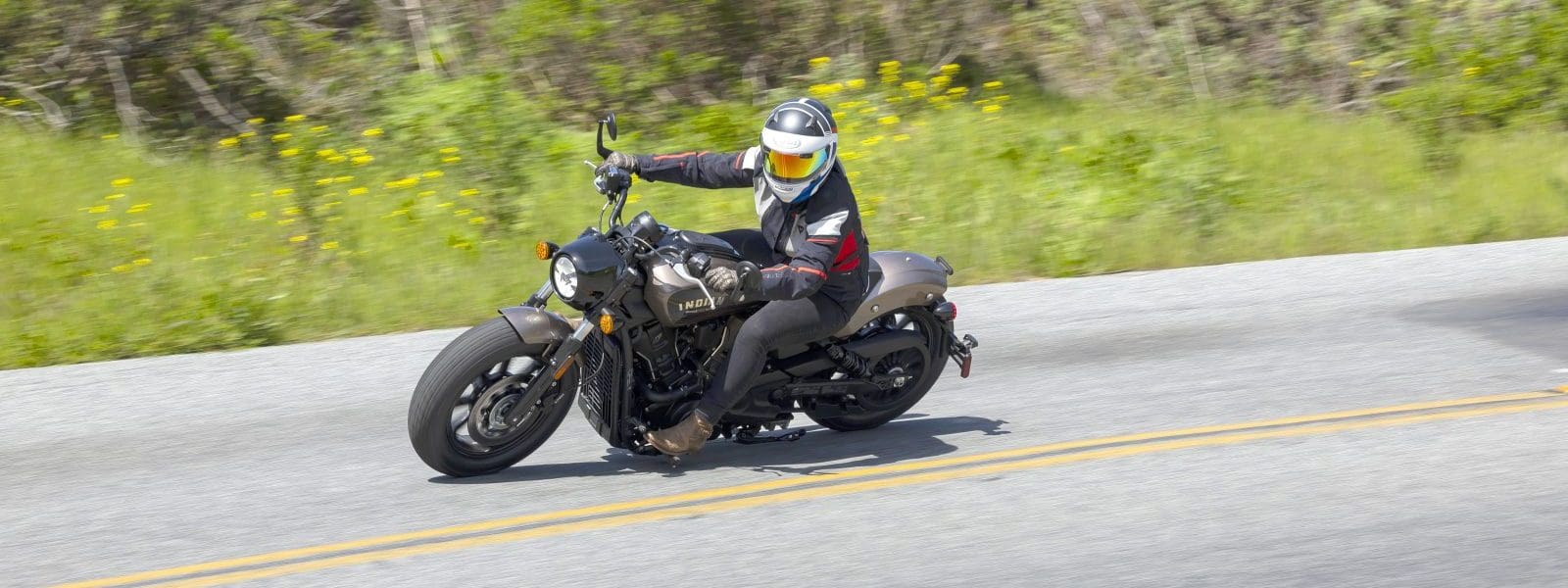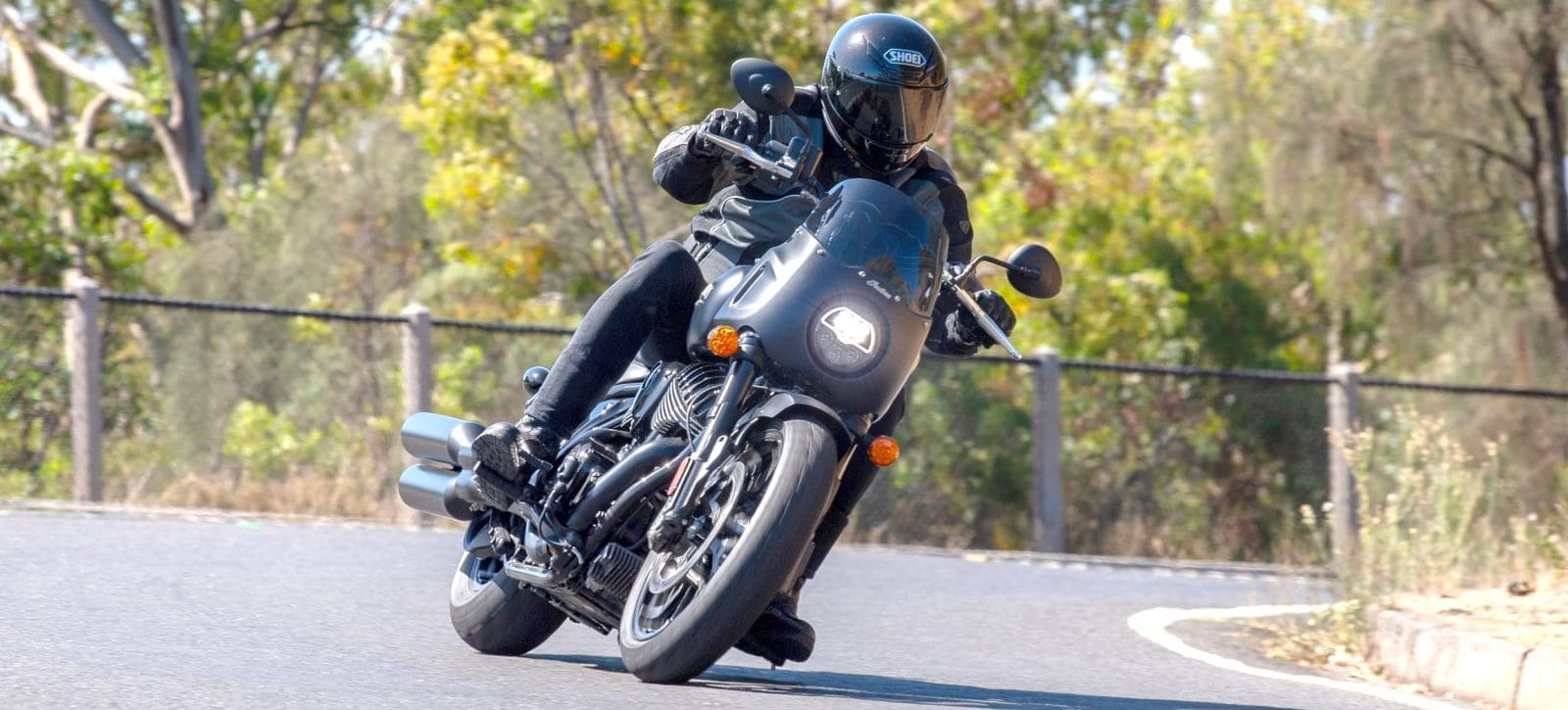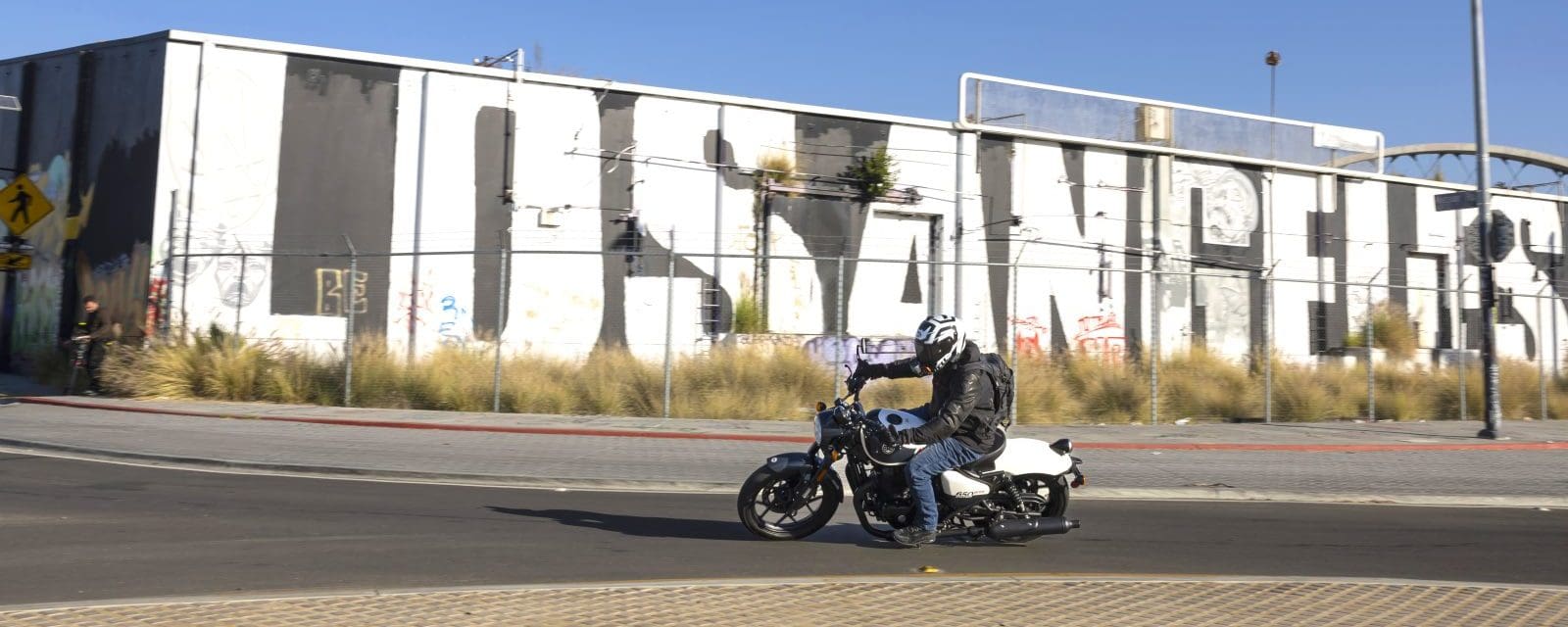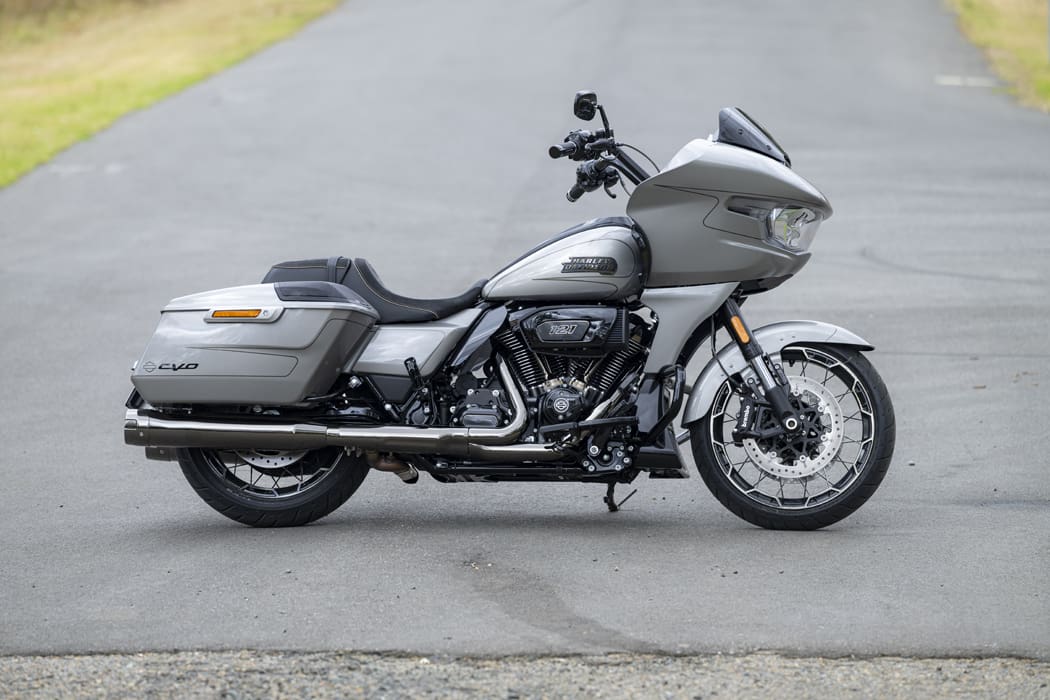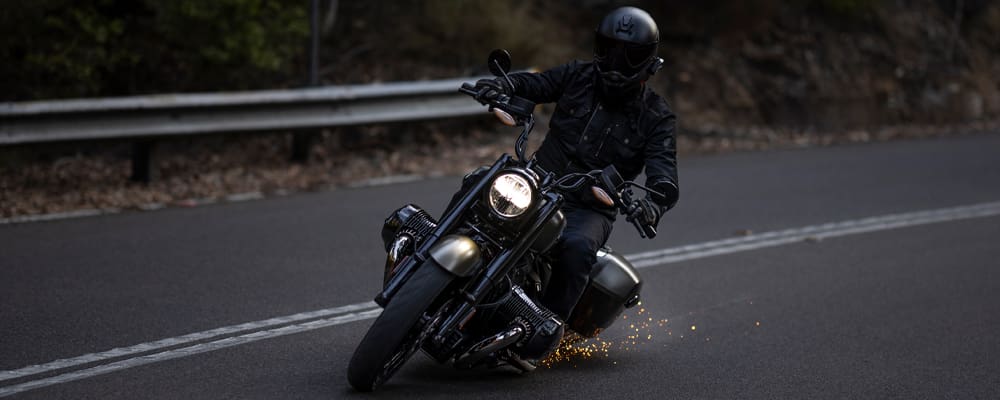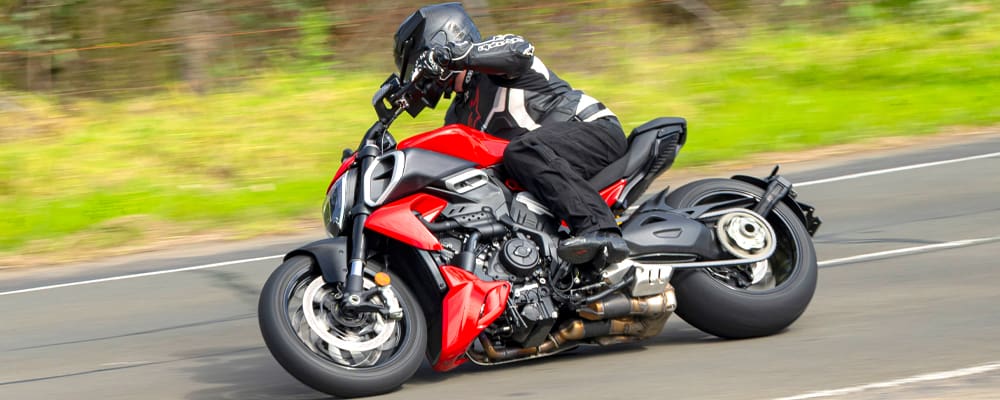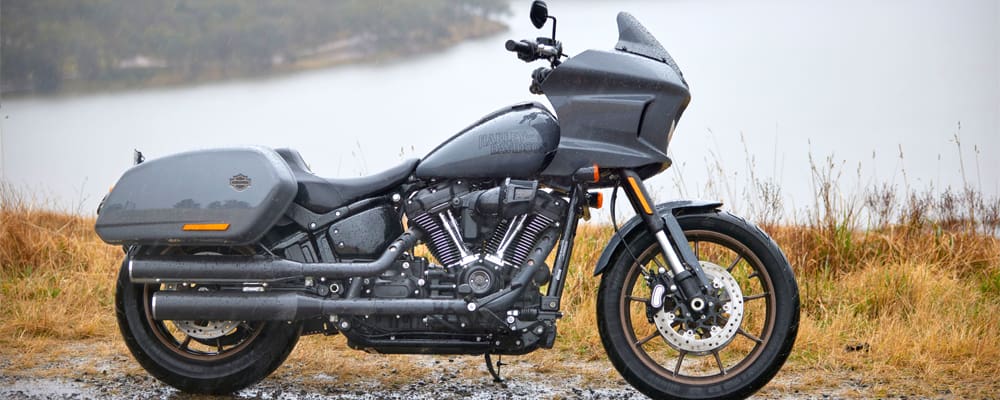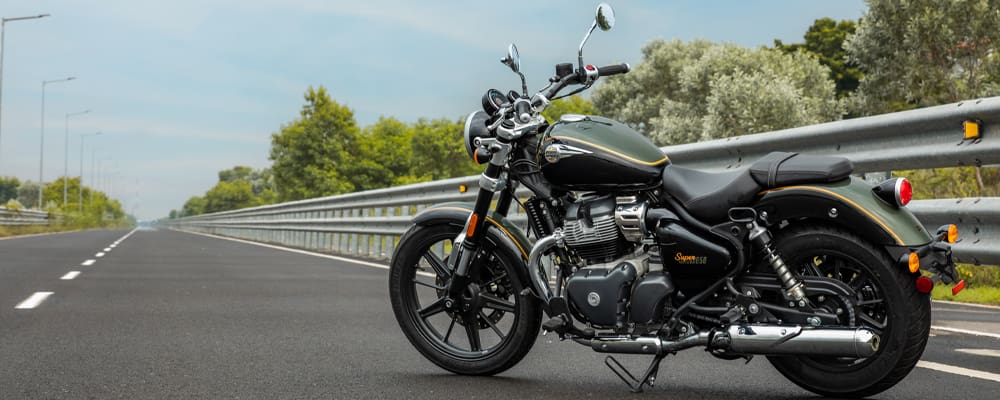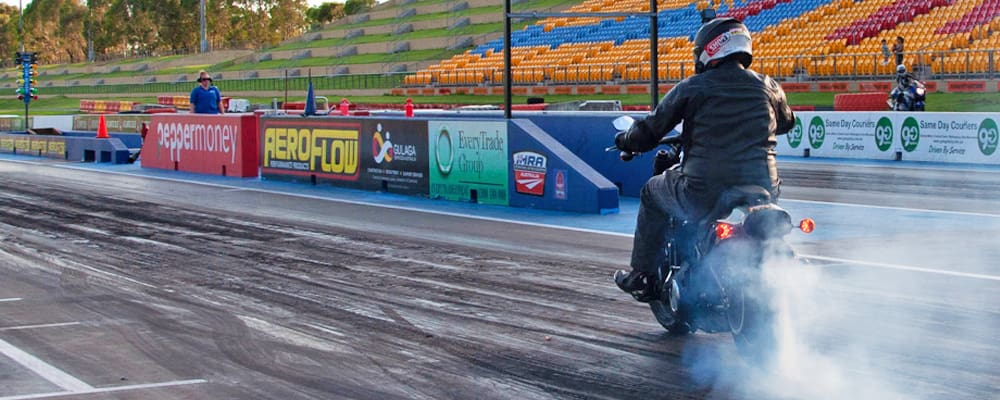If you’re still sooking, the latest Low Rider S will dry those eyes.
The extinction on the Dyna back in 2017 brought metaphorical tears to the eyes of Low Rider lovers. I was one of them, because I loved the Dyna Low Rider with a full heart – I reckoned back then that the Low Rider was the best model in the Motor Company’s range.
In 2020 H-D released a new Low Rider. But gone was the twin-shock rear suspension and the Evolution engine, replaced by the monoshock rear end, Softail frame and the firm’s Milwaukee-Eight engine.
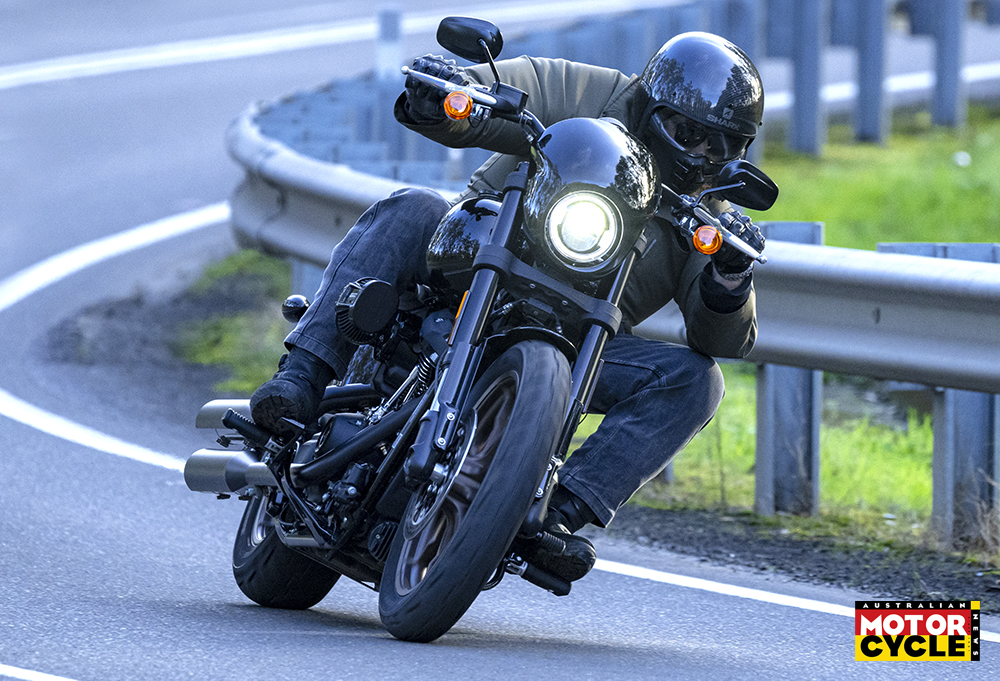
I hadn’t ridden a Low Rider of any flavour since the demise of the beloved Dyna until I had the opportunity to ride the 2022 Low Riders S at the launch of Harley’s ST range in Bright, Victoria. I walked away from the event mightily impressed with the new-generation Low Rider, it’s a better-handling, better-braking and faster motorcycle, yet losses next to none of the character or classic Harley hot-rod style of the Dyna Low Rider.
Since the release of the Softail-based version, the yankee machine has seen an incremental increase in engine capacity with the 2018 Low Rider fitted with the then all-new 107 cubic-inch (1746cc) Milwaukee-Eight powerplant. In 2020 that increased to 1868cc with the addition of the Milwaukee-Eight 114 and for 2022 the capacity has blown out to 1923cc with the fitment of the biggest Milwaukee-Eight yet, the 117.
Previously the domain of Harley’s high-end and high-dollar CVO models, the fitment of the 117 means that the Low Rider S and its bagged and faired Low Rider ST sibling have the biggest donk available in a production Harley.
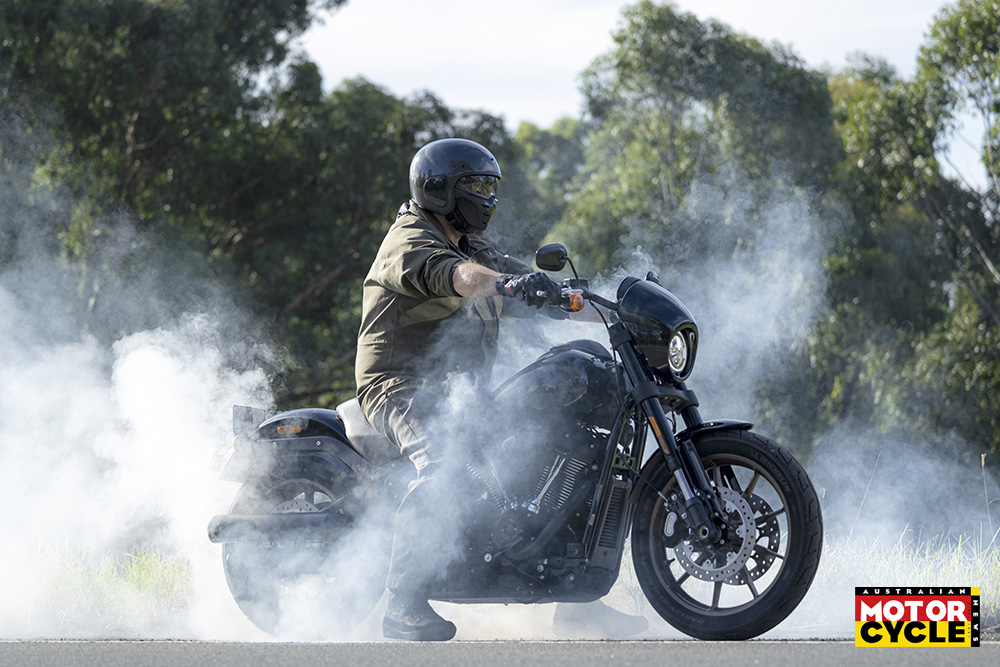
The three cubic-inch increase doesn’t sound significant, but the extra power, and especially the extra grunt, drags the Low Rider into a new level of performance that makes a really noticeable difference. Power has increased from 70kW to 77kW at 4750rpm – but that’s not particularly noticeable because you don’t rev a V-twin – so you’re more likely to notice the torque of the 117 which has increased from 155Nm at 3000rpm to 169Nm at 3500rpm.
I will say that without a back-to-back test, I didn’t really notice an improvement in plodding around in town or hooking along the highway. However, it was my penchant for green-light-launches and dumping the clutch out of slow corners that showed the truly noticeable difference.
Being less than delicate with the clutch on a 107 cubic-inch Harley may return a small chirp from the rear tyre, the same action on a 114ci propelled cruiser will have you wheel spinning off the lights for a good couple of metres if the surface be right, but on the Low Riders S the 180 section rear tyre will light up and stay lit up until you pull second which is met with a nice little chirp. As well as this, if the surface is grippy the front will come up and that’s something you just don’t experience on the smaller-capacity cruisers. This is hardly empirical evidence but there is a clear difference. It’s like that extra 55cc has taken the Low Rider over a threshold that the rear Michelin Scorcher is not as well equipped to handle.
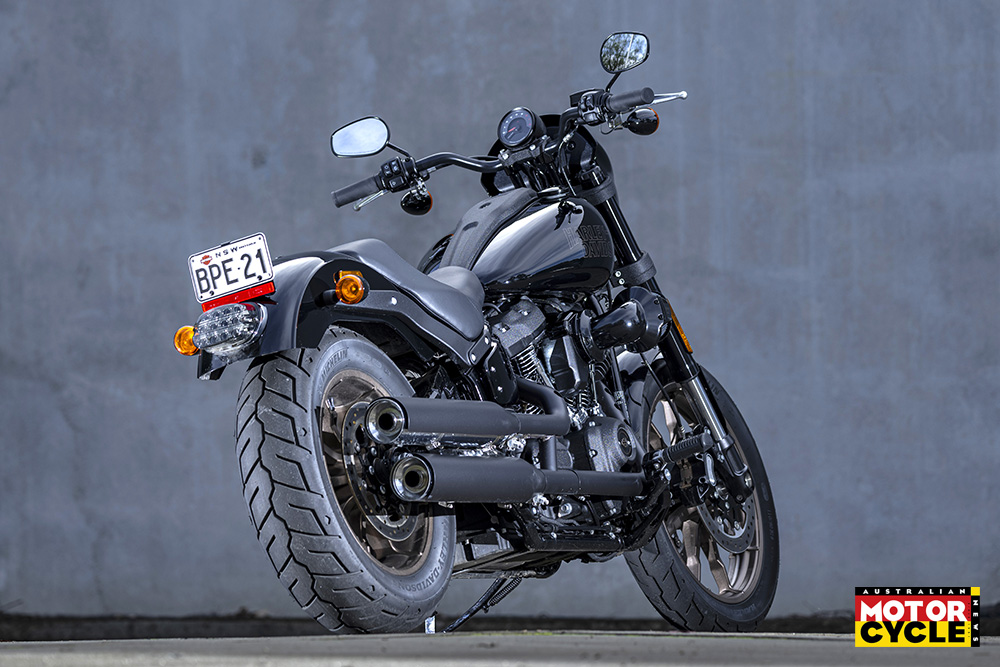
If I seem to be going on a bit much about the engine that’s because, apart from the Harley look and presence, it’s all that really matters – they have come a long way but if you’re basing you Harley cruiser purchase on how well they handle, you should probably be looking elsewhere.
Also new for 2022 is the addition of Harley’s forward-facing heavy breather intake that has also previously only been found on the Motor Company’s CVOs. It looks cool, no doubt, and I’m sure it channels air to the donk in a more efficient manner that improves performance, but unless you have short legs, it can be an addition that isn’t overly welcome. At 186cm tall, my shin rests on the back of the breather and can get pretty unpleasant after a while on the bike, especially if the roads are bumpy which can cause you the bash your shin with enthusiasm and verbalise profanity in a surprising array of languages.
Apart from the bigger engine and heavy breather, mechanically there isn’t a lot of difference between the old and new models. Harley is claiming a 1.3 degree increase in lean angle before the inevitable dragging of the ’pegs which has been found using a new, longer monoshock that jacks the bum up.
The Showa shock offers preload adjustability only and, unlike a bunch of other cruisers in the range that offer a remote preload adjuster, you’ll need to grab some tools to dive in under the seat to perform adjustments.
Attached to the front of the tubular-steel Softail frame is a 43mm non-adjustable Showa USD fork held by a rigid alloy triple clamp. It would be nice to have more adjustment in the suspension package, not only so you can se tup the Low Rider S to better your riding style and, but also because if you have a 2022 Low Rider S in the garage it may come to mind that you have just paid at least $31,250 for an air-cooled motorcycle with rudimentary suspension.
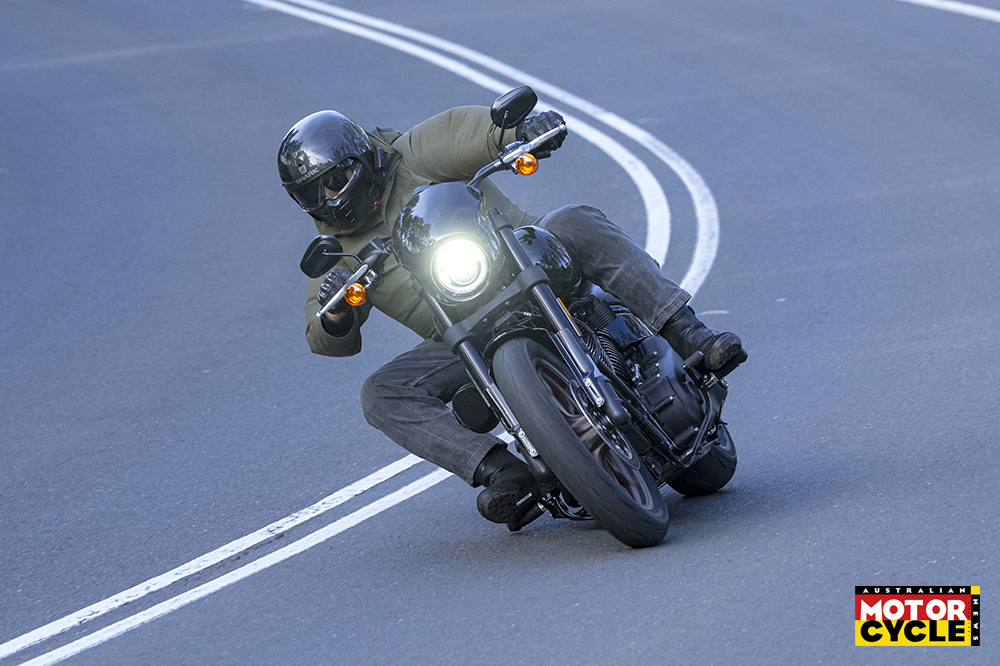
The handling is pretty good and with a little extra ground clearance I felt happy to push and ride harder than I would on some H-D cruisers. But let’s be honest, when it comes to handling and cornering ability, the Harley benchmark is pretty low. So even with a bit more ability ability you can still find it’s leaning limits with minimal speed and talent because ground clearance is still the limiting factor rather than suspension performance in most situations. That said, with the exception of the Fat Bob, it’s arguably the best handling Harley cruiser and in faster and more open corners its weight means it’ll plant itself in a corner and little will faze it. In this regards it’s a testament to how good the factory suspension settings actually are for the type of riding the Low Rider S is intended for.
Single front brake systems on big heavy cruisers are just crap. Do bikes like the Breakout or Fatboy need dualies? Probably not, but a twin-disc front brake setup is always going to give better results and it’s a good thing that Harley has chosen to go this way with the Low Rider. The S is equipped with a set 300mm discs and Harley-branded four-piston calipers that have enough power to pull up the 308kg machine up in a manner that will test the performance of both the front tyre and the ABS system.
I’ll give the power of the front stoppers a solid pass mark, but like just about every Harley cruiser, it’s the feel and initial bite that disappoint and never seems to improve with each model update. It’s not that Harley don’t know how to come up with a ripping brake package – the Pan America’s is nigh-on perfect. Perhaps I’m being too harsh, it could actually be genius, Harley cruisers are about old-school vibes and the Motor Company continues to hit the nail on the head by giving its brakes a genuine old-school drum-brake feel.
But I’m not going to try and put lipstick on a pig; Harley’s aren’t about out and out performance, they’re about the noise, the vibes, the image and the lifestyle. There’s just a certain emotion you feel when you’re riding a Harley that lets you harness a bit of outlaw cred you’re otherwise not entitled to.
The cockpit has come in for some attention this latest update, too, with the addition of a round four-inch handlebar-mounted instrument cluster, which replaces the tank-mounted instruments seen on the previous Low Rider’s 18.9L tank
Having the dash mounted on the tank is such a classic Harley style, but once you’ve spent time on one with ’bar- or fairing-mounted gauges, you realise just how ridiculous having to look down at crotch level to read your speed or see if a self-cancelling indicator has failed to cancel is, so kudos to Harley for this small but significant change.
The solo seat is reasonably comfortable and perfectly acceptable if you’re using the Low Rider to get to around town, and even on longer hauls I was genuinely impressed with its butt-cupping abilities. The rear of the seat curves up to stop you sliding backwards which is a smart move because there’s not a lot behind to impede your inevitable rearward progress when you gun the big twin.
While we’re on the subject of seats, how is it that a motorcycle costing over 30 grand doesn’t come with a pillion pad or a set of pillion footpegs? Yes, it looks cooler without the twin seat, but it’s a nice option to have if your pickup lines work at the local. Just the bits in the same bag with the owner’s manual and spare key, please Harley, so customers have the option.
And the bike’s moniker is becoming less and less relevant as the years pass. The last Dyna Low Rider had a seat height of 685mm, that increased to 690mm for the 2021 model and that had now increased again for 2022, up to 710mm. Hardly a High Rider, but even the accessible 710mm seat height can be problematic for taller people because the mid-mounted controls and low seat meant that I was pretty cramped on the S. The mid-mount controls are also perfectly placed to get in your way when you go to put a foot on the ground, which was much the same with the Street Bob. It would be so much more comfortable for taler folk with forward controls. Again, maybe give customers the option?
For those into the latest and greatest electronic motorcycle gadgetry the Low Rider offers ABS, LED head and taillights, a USB power source and, ahh, nothing else. No ride modes, no power modes, no traction control, no quickshifter. In fact, for $30k+ you still get incandescent indicators. Oh well, like vinyl, maybe globes will make a comeback.
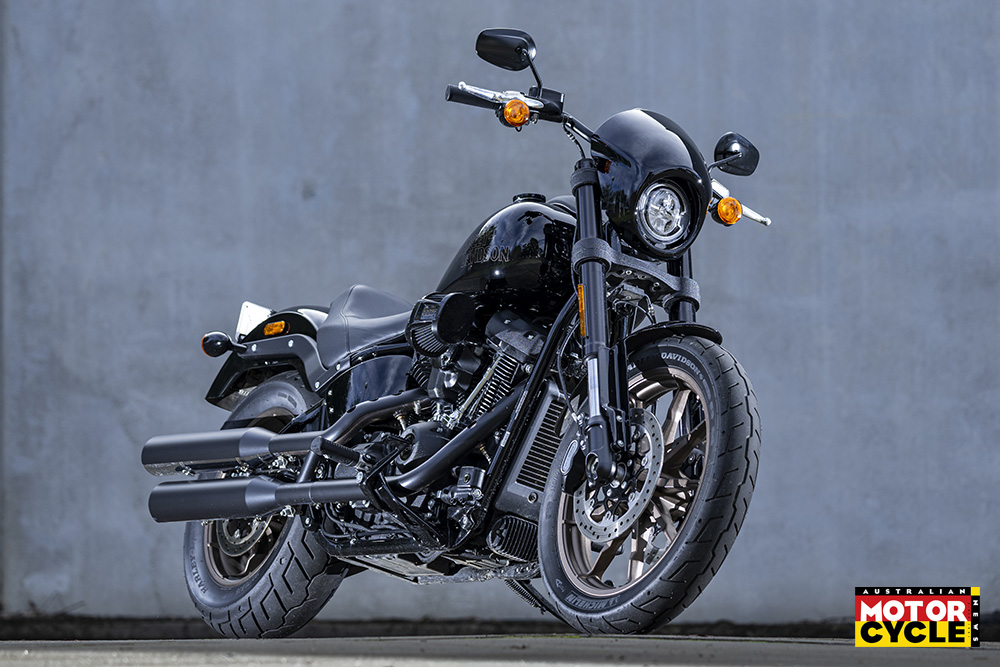
If you’re after the classic custom look and value overall performance from your Harley then the Low Rider S is the pick. I love the look of the Breakout and it’s Australia’s favourite Harley, but if you pick the Breakout over a Low Rider, I instantly know a few things about the kind of rider you are. Firstly, you value looks over performance. Secondly, you value straight roads over twisty ones, and thirdly, you have a thing for fat rear ends – who doesn’t though, right? I like the Breakout plenty, but it’s $5k more expensive, has no more tech than the Low Rider, has inferior brakes, a smaller-capacity engine and doesn’t handle anywhere as good as the Low Rider.
I have had a bit of a whinge about the Low Rider, but I’m mostly just pointing out the things that were an issue for me and my above-average height and weight. I really do like the Low Rider S, it’s a worthy successor to the Dyna Low Rider and for the most part, it’s a pleasure to ride. My reasoning is tainted, the fast pace which motorcycle technology is moving makes the Low Rider S look rather agricultural in comparison to other machines in its price bracket. And that’s the sticking point for me. Even though it ticks all the boxes a Dyna Low rider S should, it’s still relatively expensive. Not so much for what you’re getting, but rather what you’re not.
Dyna-mo
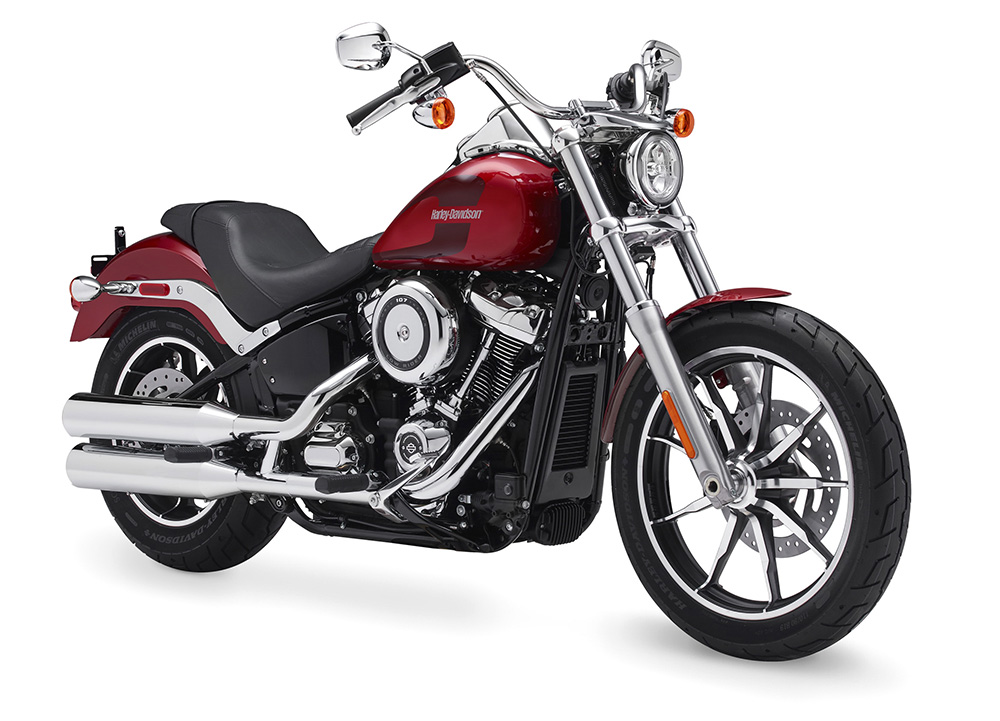
Using the same basic frame and engine package as the Motor Company’s FX Super Glide of the mid-70s, the first Low Rider hit the streets in 1977 and the Shovelhead-powered rig was a major hit with Harley fans. The Low Rider sported cut-down guards, custom-cruiser looks and mag wheels rather than the spokes wheels found on other Harleys and the majority of motorcycles in general. Low riders have always rolled on mags, and you’d surely agree that the family resemblance is strong in the 2022 model.
The first of the much-loved Dyna-chassis Low Riders hit H-D dealerships in 1991 and featured a new rubber-mounted engine configuration that made the Low Rider a far nicer beast to ride without losing any of the character of the original.
After a 27-year model run, the Dyna Low Rider was discontinued with the Evolution-engined 2017 Low Rider S being the pinnacle of the breed to that point.

The Low Rider name returned in 2018, but this time the Dyno frame was gone, as was the twin rear shocks and Evolution engine, replaced by a new Low Rider built on Harley’s all-new and far superior Softail platform. Gone also was the Evolution engine which was replaced by the new Milwaukee-Eight 107 and the dark and menacing looks of the last Dyna model were jettisoned for a more classic chrome look.
In 2020, Harley announced the return of the Low Rider S. The dark looks returned and the powerplant was updated to the 114ci version of the Milwaukee-Eight.
![]()
Cruise missiles

Ducati XDiavel Dark
$31,800 (ride away)
Capacity 1262cc
Power 112kW @ 9500rpm
Torque 126Nm @ 5000rpm
Weight 247kg (kerb, claimed)

Indian Chief Dark Horse
$26,995 (ride away)
Capacity 1890cc
Power Not given
Torque 162Nm @ 3200
Weight 304kg (kerb, claimed)
Triumph Rocket 3
$35,490 (ride away)
Capacity 2458cc
Power 123kW @ 6000rpm
Torque 221Nm @ 4000rpm
Weight 291kg (dry, claimed)
![]()

2022 HD Low Rider S – Specs
Engine
Capacity 1923cc
Type 45° V-twin, pushrod, four-valves per cylinder
Bore & stroke 103.5 x114.3mm
Compression ratio 10.2:1
Cooling Air / oil
Fueling Electronic sequential port fuel-injection
Transmission Six-speed
Clutch Wet, 10-plate, assisted
Final drive belt
Performance
Power 77kW @ 4750rpm (claimed)
Torque 169Nm @ 3500rpm (claimed)
Top speed 220km/h (est)
Fuel consumption 6.1L/100km (measured)
Electronics
Type Bosch ABS, Ride-by-wire
Rider aides Not applicable
Modes Not applicable
Chassis
Frame material Steel
Frame type Dual beam/cradle
Rake 28°
Trail 145mm
Wheelbase 1615mm
Suspension
Type Conventional
Front: 43mm USD telescopic fork, non-adjustable, 130mm travel
Rear: Monoshock, adjustable preload, 112mm travel
Wheels & brakes
Wheels Cast aluminium
Front: 19 x 2.5 Rear: 16 x 5
Tyres Michelin Scorcher 31
Front: 110/90B19
Rear: 180/70B16
Brakes H-D, ABS
Front: Twin 300mm discs, four-piston calipers
Rear: Single 292mm disc, dual-piston caliper
Dimensions
Weight 308kg (kerb, claimed)
Seat height 710mm
Width 870m
Height 1195mm
Length 2365mm
Ground clearance 145mm
Fuel capacity 18.9L
Servicing & warranty
Servicing First 1600km
Minor 8000km
Major 48,000km
Warranty Two years, unlimited km
Business end
Price From $31,250 ride away
Colour Vivid Black
Contact harley-davidson.com/au
TEST: PETE VORST PHOTOGRAPHY INCITE IMAGES
